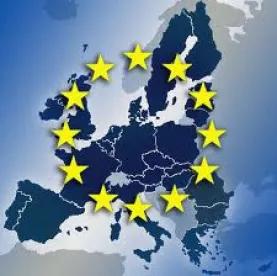Digital Single Market Policy
In August, the Commission announced a public consultation on the review of the EU satellite and cable Directive of 1993. The Directive regulates the clearing of copyrights and related rights for satellite broadcasting as well as cable retransmissions in the internal market. The review aims at adapting the Directive to take new content distribution models such as online broadcasting services into account and, more generally, to enhance “cross-border access to broadcasters’ services in Europe”. A key issue will be the territorial scope of digital transmission rights. The current practice of content providers is to sign licensing agreements with a national scope of application, which often segments the European market.
The Commission has also published a roadmap for the modernisation of VAT rules for cross-border e-commerce. In its opinion, prevailing differences between the national systems of VAT registration and declaration represent a real obstacle to cross-border trade. The Commission is particularly concerned about the complexity, high costs and continuing differences in tax treatment. It has also identified a range of policy options that could address these issues, ranging from the elimination of distance sales thresholds and the small consignments exemption to fully harmonized EU rules with a single electronic mechanism for VAT declarations. A public consultation on the subject matter is expected in September.
Energy and Climate Change Policy
Over the summer, the European Commission launched several consultations that aim at revamping the EU’s energy policies. The most comprehensive consultation is that on the new Energy Market Design, which outlines the following four goals:
|
1. |
Reinforce the functioning of electricity markets. According to the Commission, short-term electricity markets, notably intraday and balancing markets, should be coupled, have pricing caps removed and be more flexible as a whole. Further, wholesale electricity pricing zones should be redrafted to reflect actual transmission capacity. Better functioning long-term markets should provide the financial security and clarity needed to foster the investments in new electricity projects where required. |
|
2. |
Guarantee a stable investment framework for renewables in Europe. This should include coordinating national support schemes for renewable energy within a regional approach. Among other things, the Commission is considering a common framework for cross-border participation in support schemes in order to overcome practical difficulties in the cooperation between member states in this area. |
|
3. |
Strengthen the overall governance of electricity policies in the EU. The Commission proposes strengthening the powers of existing agencies and networks. In particular, it proposes to give decision-making powers to the European Network of Transmission System Operators for Electricity (ENTSO-E) and grant new powers to the Agency for the Cooperation of Energy Regulators (ACER) to make binding decisions on cross-border issues and EU-level initiatives. Moreover, the Commission is considering a review of the revenue framework for transmission system operators in order to incentivize cooperation. The governance position of distribution system operators will also be evaluated and reinforced if necessary. |
|
4. |
Improve security of supply. The Commission proposes to adopt a series of technical measures. Among other things, it is considering harmonizing the methodology to determine system adequacy and implementing common standards to calculate the need for cross–border capacity mechanisms. |
The consultation is open until October 8, 2015, and is intended to help the Commission decide on potential follow-up initiatives.
Other public consultations that were launched in the field of energy policy over the summer include:
|
1. |
the review of the Energy Performance of Buildings Directive; |
|
2. |
|
|
3. |
the review of the Intergovernmental Agreements (IGAs) Decision; |
|
4. |
the risk preparedness in the area of security of electricity supply |
Internal Market and Financial Services Policies
On July 30, The European Securities and Markets Authority (ESMA) published its Opinion on the functioning of the Alternative Investment Fund Managers Directive (AIFMD) passports, used by EU funds to market themselves. It argues that, at a first glance, there appear to be no major issues. However, it is refraining from a definitive assessment, given the late transposition and implementation of the AIFMD in some member states.
On the same day, ESMA also published its Advice to the Commission, European Parliament and Council regarding the extension of the passports to non-EU alternative investment fund managers and non-EU alternative investment funds. Having reviewed six potential candidates—Guernsey, Hong Kong, Jersey, Singapore, Switzerland and the United States—it concluded that it would extend the application of the passport to Guernsey, Jersey and Switzerland (in the case of latter, under the condition that the pending legislation on Stock Exchanges and Securities Trading is adopted). However, no definitive conclusion was reached on the three other states due to competition and regulatory concerns as well as an absence of detailed information to make an appropriate assessment.
On August 6, the European Commission adopted a Delegated Regulation making it mandatory for certain over-the-counter (OTC) interest rate derivatives to be cleared through central counterparties.
On August 27, 2015, ESMA published its Discussion Paper on its Review of Article 26 of Regulatory Technical Standards No 153/2013 (RTS), with respect to Client Accounts. The RTS was published on December 19, 2012, and supplements the European Markets Infrastructure Regulation (EU 648/2012) (EMIR) with regard to regulatory technical standards on requirements for central counterparties (CCPs). Article 26 of the RTS relates to time horizons for the liquidation period and provides that a CCP shall define such time horizons, taking into account the characteristics of the financial instrument cleared; the market where it is traded; and the period for the calculation and collection of margins. Article 26 also states the applicable time periods. The discussion paper seeks views on Article 26 of the RTS, including a regulatory technical standard for CCPs on the time horizons for the liquidation period, which ESMA has drafted under EMIR. Responses are required by September 30, 2015.
On September 1, 2015, ESMA published its Consultation Paper on the Draft Implementing Technical Standards under MiFID II. The Paper covers: the suspension and removal of financial instruments from trading on a trading venue; the notification and provision of information for data reporting services providers; and the weekly aggregated position reports for commodity derivatives, emission allowances and derivatives thereof. It includes the texts of draft Implementing Standards. Responses are required by October 31, 2015. ESMA intends to send its final report to the European Commission on January 3, 2016.
Life Sciences and Healthcare Policies
Last month, the German and Scottish governments announced they are interested in adopting a ban on the cultivation of genetically modified organisms (GMOs). All EU member states have until October 3 to inform the Commission of their intention to limit or ban GMOs. Last April the Commission adopted a proposal that would allow member states to limit or ban the use of GMOs for feed or food purposes on their territory, following years of protracted negotiations on the authorization of GMOs.
Trade Policy and Sanctions
On August 4, after almost two and a half years of negotiations, the EU and Vietnam agreed in principle to signing a free trade agreement. The agreement will abolish 65% of the import duties that Vietnam applies on EU products and will gradually eliminate the rest of the duties over a period of 10 years. Once fully implemented, the FTA will cover nearly all goods, except for a small number of products for which zero-duty Tariff Rate Quotas will apply. The agreement also includes provisions on opening the Vietnamese market to EU services and on strengthening intellectual property rights. EU duties on Vietnamese products will be eliminated over a 7-year period and the protection of Geographical Indications for some Vietnamese products such as Môc Châu tea or Buön Ma Thuôt coffee will be introduced. The legal texts will be finalized in the autumn and the FTA will likely come into effect at the end of 2017 or beginning of 2018.
In August the free trade agreement between the EU and India was a matter of discussion as well. The negotiations started in 2007. Since then both parties have repeatedly recognized the economic and political potential of a FTA. However, a trade row regarding generic drugs stalled the negotiations in 2010 and the negotiations were put on hold in 2012. Now, Cecilia Malmström, Commissioner for Trade, has confirmed that the chief negotiators of both trade blocks will meet in September to take stock of the negotiations in the hope of bringing them back on track.






 />i
/>i

